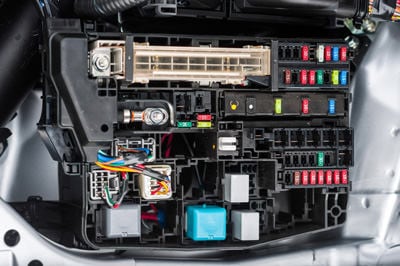Optimize systems with innovative mechanical system optimisation support.
Optimize systems with innovative mechanical system optimisation support.
Blog Article
Top Tips for Effective Electric System Troubleshooting
Troubleshooting electrical systems needs a methodical strategy, grounded in an extensive understanding of electric concepts and safety protocols. The subtleties of efficient repairing expand past plain technological expertise; understanding exactly how to record findings and prioritize security can substantially affect results.
Understand the Basics
Understanding the basics of electrical systems is important for effective troubleshooting, as a solid foundation permits professionals to detect and resolve concerns much more efficiently. An extensive grasp of electrical principles, such as voltage, existing, resistance, and power, is essential in recognizing the origin of problems. Voltage is the electric possible difference that drives current via a circuit, while resistance opposes the circulation of present, impacting the total performance of the system.
Knowledge with circuit elements, consisting of resistors, capacitors, diodes, and changes, is additionally paramount. Each part plays a distinct duty in circuit behavior and can influence performance when malfunctioning. In addition, comprehending series and parallel circuit configurations is essential, as these arrangements affect the circulation of voltage and existing within the system.
In addition, expertise of security methods is crucial. Specialists have to know prospective threats, such as shock and short circuits, to carry out safe troubleshooting methods. By understanding these fundamental ideas, professionals enhance their ability to conduct reliable diagnostics and fixings, eventually causing boosted performance and reliability of electrical systems. This fundamental knowledge is the foundation of effective repairing endeavors.
Gather Necessary Devices
Effective troubleshooting of electric systems calls for the appropriate collection of tools to identify and settle concerns properly. A well-equipped specialist can considerably improve effectiveness and efficiency in determining issues. Necessary devices include a multimeter, which measures voltage, current, and resistance, allowing for precise analyses of electric elements. Clamp meters are also important for measuring present without disconnecting the circuit, ensuring safety and security and ease.
Furthermore, shielded hand devices such as screwdrivers, pliers, and cord strippers are important for safely manipulating electric connections. It is additionally recommended to have a circuit tester on hand to confirm the presence of voltage in electrical outlets and cables. For even more complicated systems, a thermal imaging camera can aid discover overheating parts, suggesting prospective failures.

Comply With an Organized Approach
Having gathered the appropriate tools, the following action in repairing electric systems is to adhere to an organized strategy. A systematic approach makes sure that technicians can identify mistakes successfully and properly, decreasing downtime and protecting against unneeded repair services.
Begin by assessing the system's schematic layouts and specs. This involves monitoring each component systematically, beginning from the power source and working in the direction of the tons.
Utilize screening equipment, such as multimeters and oscilloscopes, to gather unbiased information concerning voltage, current, and resistance at numerous points within the system. This empirical proof will certainly direct your troubleshooting efforts and assist to confirm or remove prospective causes of failure.
In addition, take into consideration environmental variables that may affect the system's efficiency, such as temperature fluctuations or dampness access. A detailed assessment of wiring, links, and elements will certainly guarantee that all possibilities are represented.
File Your Findings
Thorough paperwork is important in the repairing process of electric systems. Exact records useful reference enhance the effectiveness click this site of identifying persisting concerns and help with interaction amongst employee. Each searching for should be thoroughly kept in mind, including signs observed, examinations conducted, and the outcomes of those examinations. electrical system troubleshooting. This technique not only aids in recognizing the root cause of the issue yet additionally acts as a recommendation for future repairing efforts.

In addition, preserving a log of parts replaced or fixings done is very useful. This info supports inventory management and can aid evaluate the longevity and dependability of details parts.
Ultimately, the documents procedure ought to be comprehensive yet concise, making it possible for simple access and Home Page evaluation - electrical system troubleshooting. By focusing on in-depth documentation, specialists can develop a useful knowledge base that not just help in current troubleshooting yet likewise encourages future maintenance initiatives, consequently improving general system reliability

Prioritize Precaution
Identifying the fundamental threats connected with electric systems is essential for ensuring security throughout troubleshooting. Electrical shock, burns, and devices damages are just a few of the possible risks that professionals face. Prioritizing safety and security measures is not only a lawful responsibility but likewise an ethical essential that safeguards both the service technician and the surrounding setting.
Before beginning any type of troubleshooting job, technicians ought to put on ideal personal protective devices (PPE), including protected gloves, shatterproof glass, and flame-resistant garments. Making certain that the work area is dry and devoid of mess can significantly reduce the risk of accidents. Moreover, it is important to de-energize circuits prior to starting any kind of job, validating that they are not endure the usage of a multimeter or voltage tester.
Developing clear interaction methods with group participants is also important; this guarantees that everyone understands prospective risks and the status of the electric system being worked with. Having an emergency situation action plan in area can prove indispensable in the occasion of an event. By prioritizing precaution, technicians can properly alleviate dangers and promote a safer office.
Verdict
Efficient electrical system repairing counts on a thorough understanding of fundamental principles and a systematic strategy. Prioritizing safety and security steps makes certain the well-being of people involved and the stability of the electric system.
Report this page